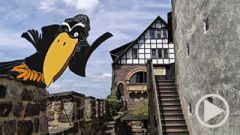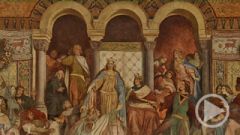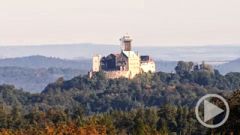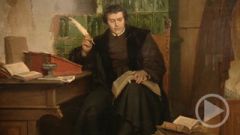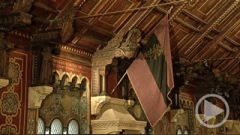Wiege der deutschen Demokratie
The Cradle of German Democracy: The Wartburg Fest
October 18, 1817. It was six a.m. and all the bells of Eisenach were ringing. Five hundred students and a few professors gathered on the central market square to march up to the Wartburg. It was an amazing number of people, considering that – at the time – there were only eight-and-a-half thousand students altogether at all German universities.
They came from Berlin, Göttingen, Heidelberg, Kiel. And they came even though the journey wasn’t easy. Back then, there were 38 German countries, each with its own borders, own currency, own customs examiners and own laws. And that was precisely what they were there to protest. The Wartburg festival was a political demonstration. The call was for all the countries in which German was spoken to finally become a single nation.
At the head of the procession was Karl Hermann Scheidler from Jena. He had co-founded a new student fraternity, with the intent that all German students would join – and not be divided into different fraternities according to where they came from. The Jena group organized the festival. The official occasion was the 300th anniversary of the Reformation.

But they scheduled the celebration two weeks too early, which was also politically symbolic. October 18th was the fourth anniversary of the victory at the Battle of the Nations near Leipzig. Many of the students had fought in the battle as part of the Lützow volunteer corps, wearing black uniforms with red trim and gold buttons. Black-red-gold were also the colours of the Jena fraternity’s flag. But the battle was in vain. They defeated Napoleon, but not their own princes. At the 1815 Congress of Vienna, Germany was organized along the same lines as it had been before the Napoleonic Wars.
Nor did the Wartburg festival change that. Despite all the speeches, the students were defeated by the arbitrariness of their rulers. Still, the seeds were sown. The call for unity and freedom had been aired in the open. To this day, black, red and gold are the colours of German democracy.


